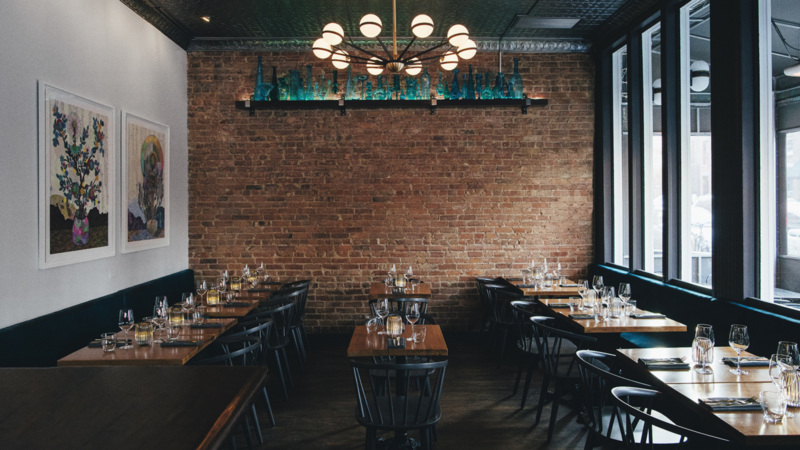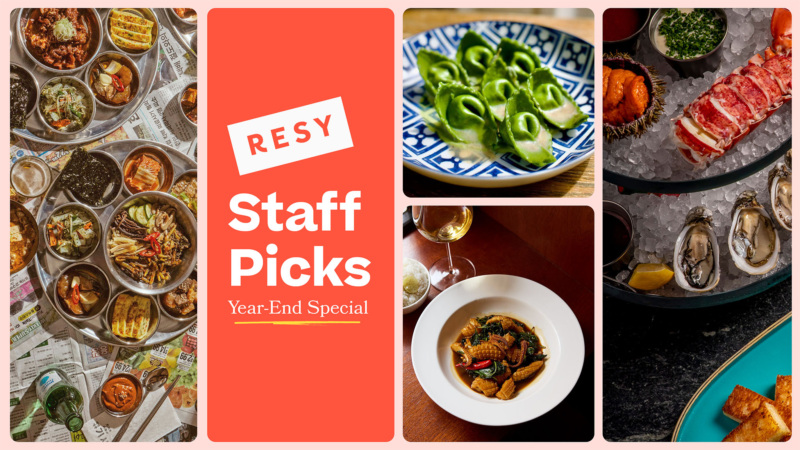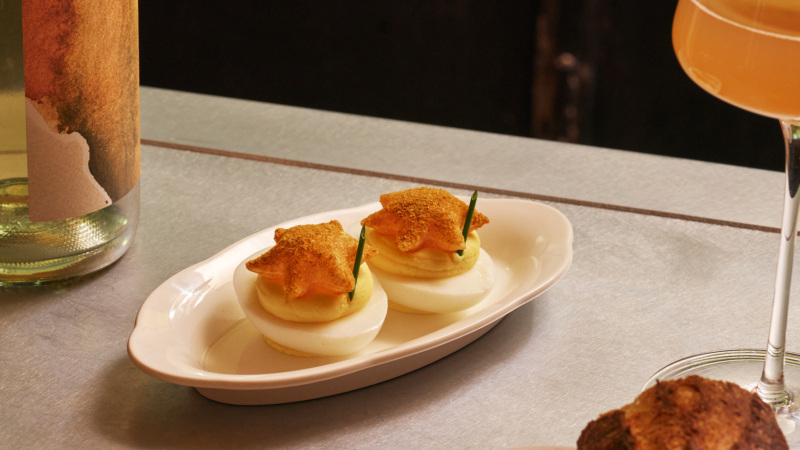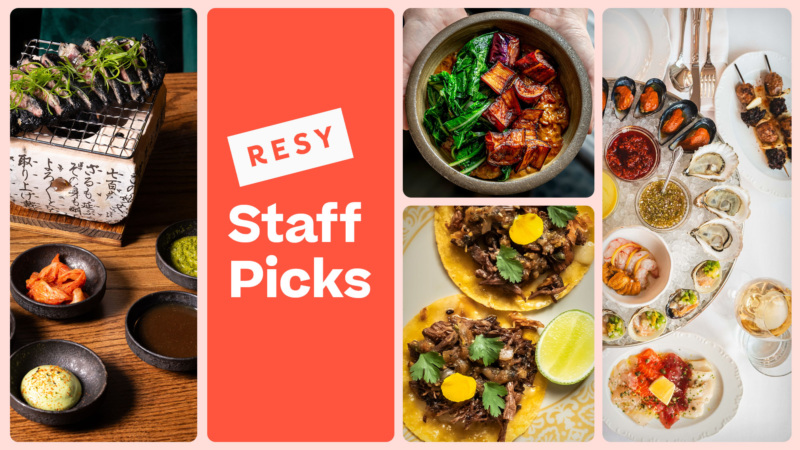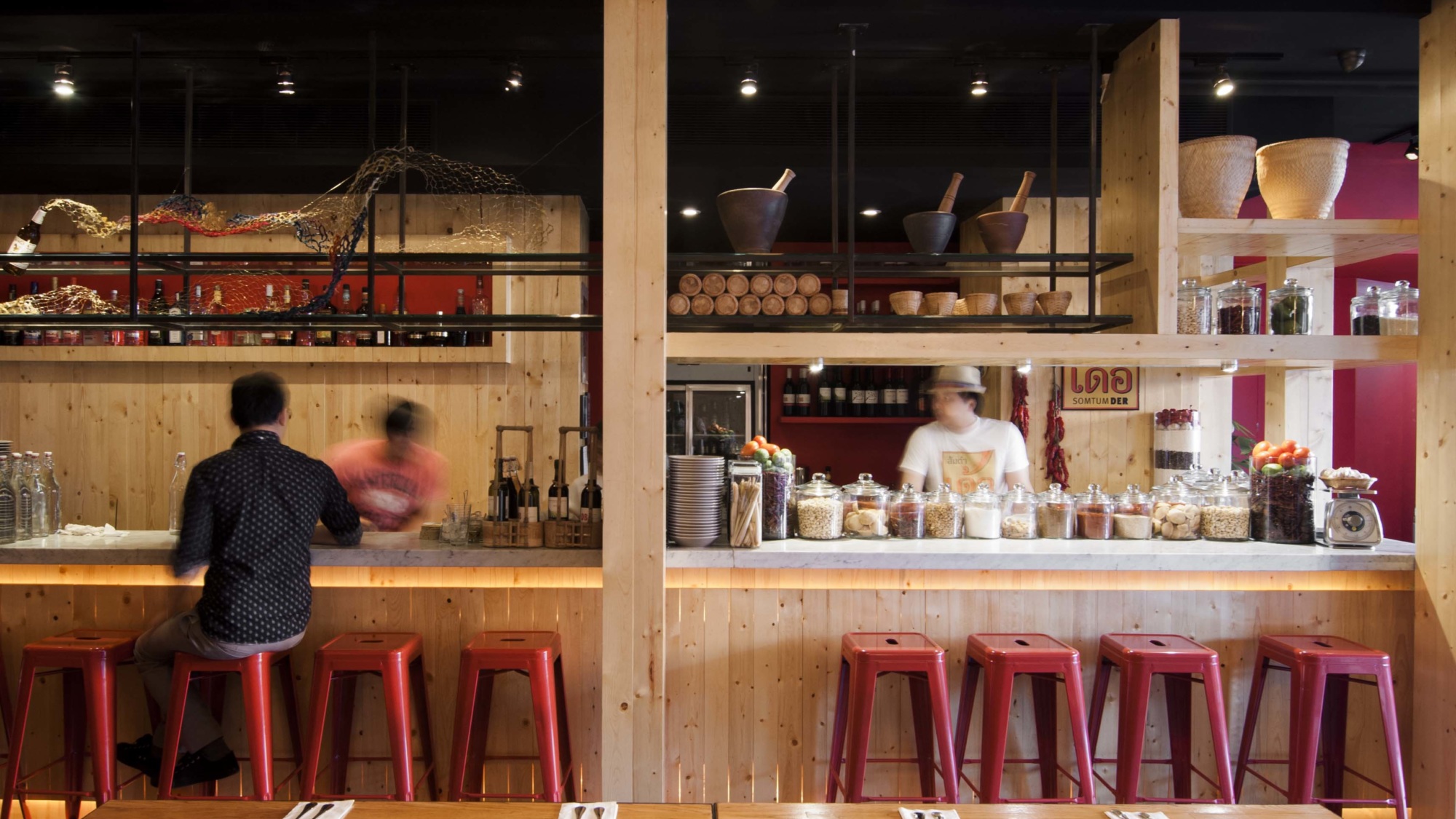
All the Dishes You Should Order at New York’s Somtum Der
Published:
If you walk into Somtum Der, whether in New York’s East Village or Red Hook neighborhoods, don’t expect to see your garden-variety Thai takeout curries and noodle dishes. The restaurants didn’t earn their loyal following and Michelin recognition by serving the same pad Thai as everyone else.
“I have to tell you,” owner Supanee Kitmahawong confides, “when we were thinking about bringing this authentic Thai food to the New York scene, I wasn’t so sure.”
Before Somtum Der opened in New York in 2013, Kitmahawong had already opened a handful of Thai restaurants in New York, including Kiin Eatery and Lantern Thai. Before that, she had worked for years as general manager of Spice Restaurant Group, the casual Thai restaurant chain you’ve almost certainly seen around, if not ordered from.
“For so many years, I used to have other restaurants that serve Thai food that toned down the palate for people in the city,” she said. Somtum Der was her leap of faith that New Yorkers, even those without Thai backgrounds, would appreciate the spicy, strong flavors of her beloved Isan (the northeastern region of Thailand) dishes as much as she and her collaborators did.
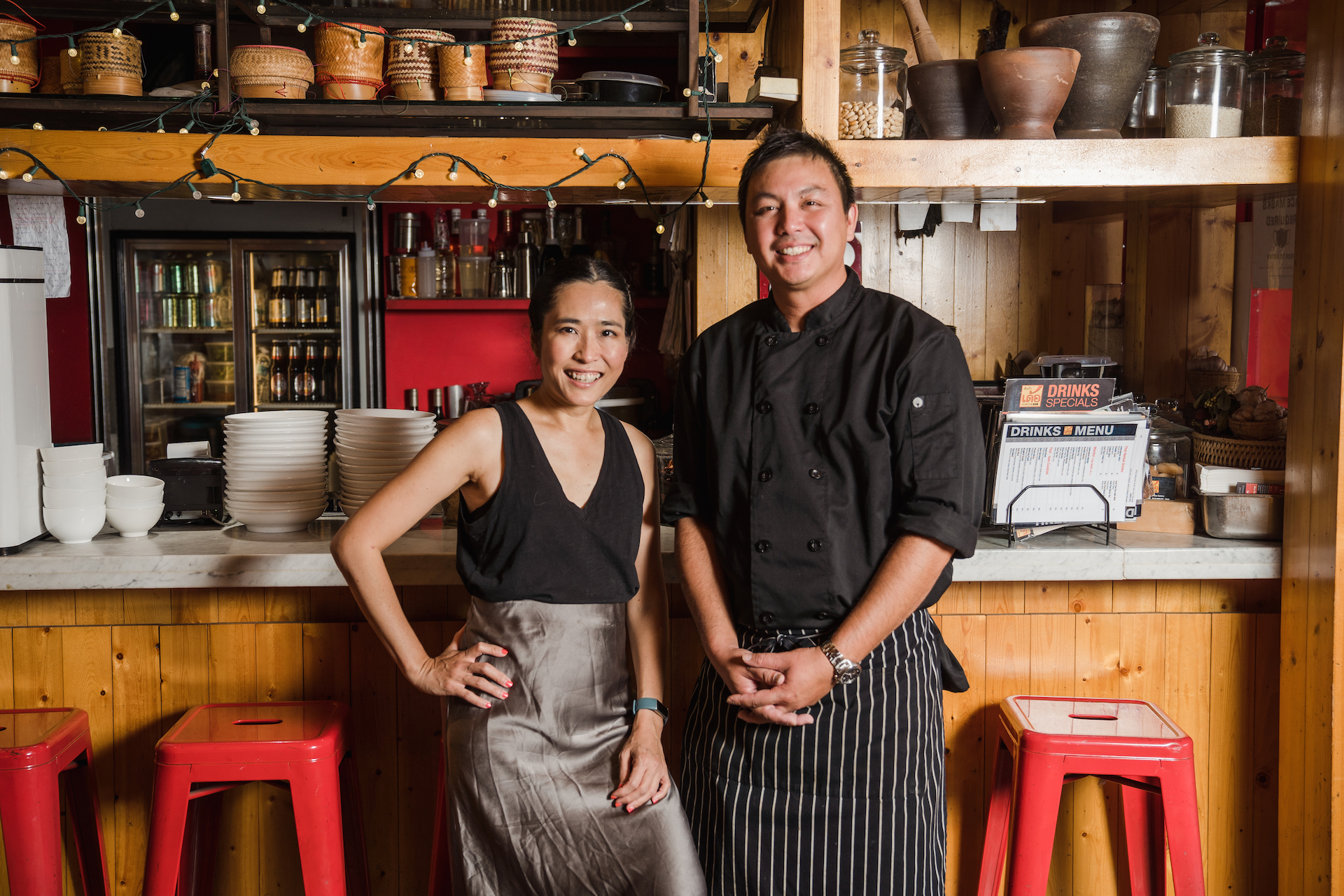
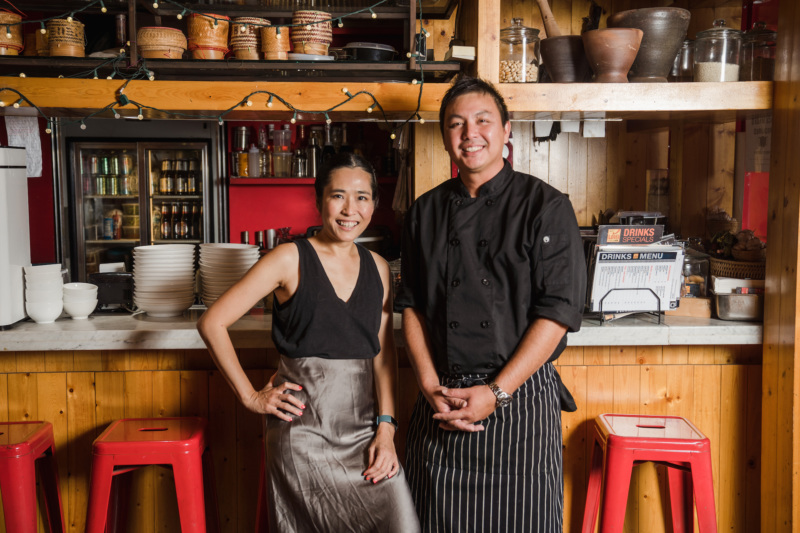
The first thing you need to know about Isan food — as Somtum Der’s servers will gladly tell you – is that it’s best enjoyed family-style (think tapas), mirroring the fun, lively culture of Isan. The standard formula, as Kitmahawong explains, is this: papaya salad (or in Thai, somtum, the restaurant’s namesake), larb, some kind of spicy soup like tom saab or gaeng om kai, and sticky rice to balance out the spicy, strong, and sometimes funky flavors. In addition to those staples, you’ll probably want to add one of their eye-catching meat or fish dishes.
The expansive menu can be dizzying, so it’s a particularly good thing that you’re not meant to choose just one dish anyway. Still, if you’re not sure where to begin, Kitmahawong and chef de cuisine Kridsanai Nethanunt, a.k.a. Chef Yim, have some suggestions.
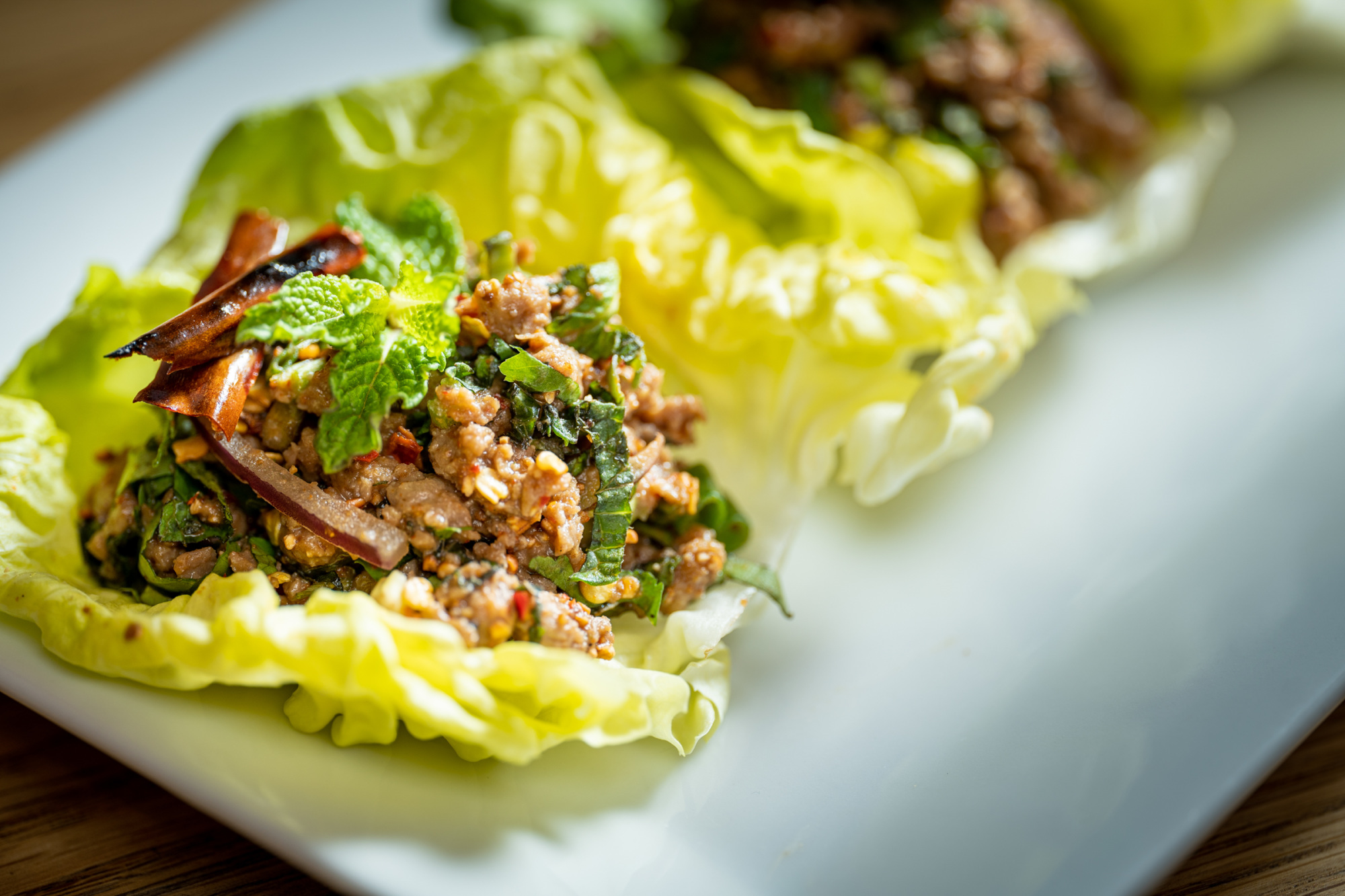
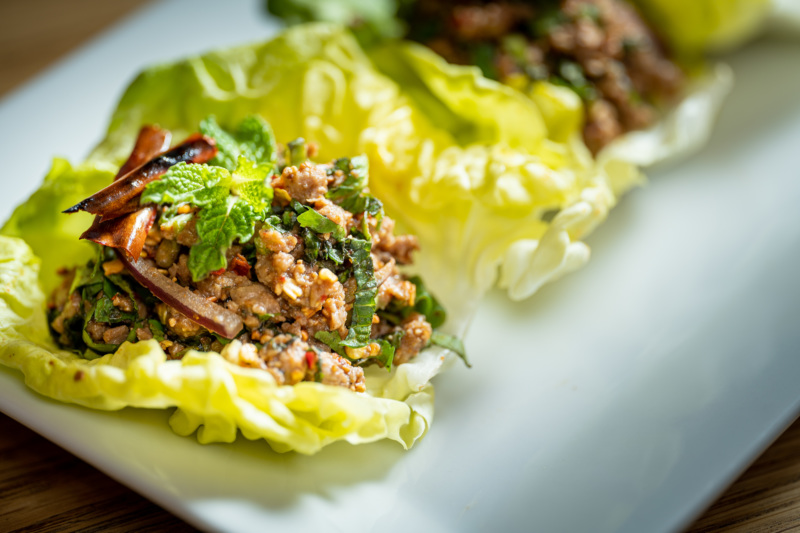
1. Impossible Isan Larb
One of the newer specials to hit the menu this fall is a vegan spin on larb, a spicy salad typically made with meat. But given its quick popularity, it may make its way onto the permanent roster.
“The idea is because we’ve seen people looking for vegetarian and vegan dishes,” says Kitmahawong. “And we thought of vegetarian larb. The chef tried so many [meat alternatives], and [Impossible meat] is the one he most likes the taste of. And then it’s combined with our typical Thai-Isan Ingredients, particularly for larb — chile powder, roasted ground rice, and fresh herbs like cilantro, mint, fresh birds eye chili and shallots.
“Larb is made of meat, usually, but there are a lot of people who do not eat meat. So, we came up with the Impossible larb for the people who eat vegetarian but still want the flavor of Isan. You might not even know [that it’s vegetarian] because it’s almost like a liver, like a foie gras, because it’s soft. Chef says that since we usually use ground meat like chicken or duck, it will have more texture to it. But this is softer, and more tender. So it’s almost got that foie gras taste to it. That’s his [Nethanunt’s] point of view, and I agree.”
Vegetarians looking for a spicy, savory larb have another option, too. “We can do mushroom larb as well,” Nethanunt notes.
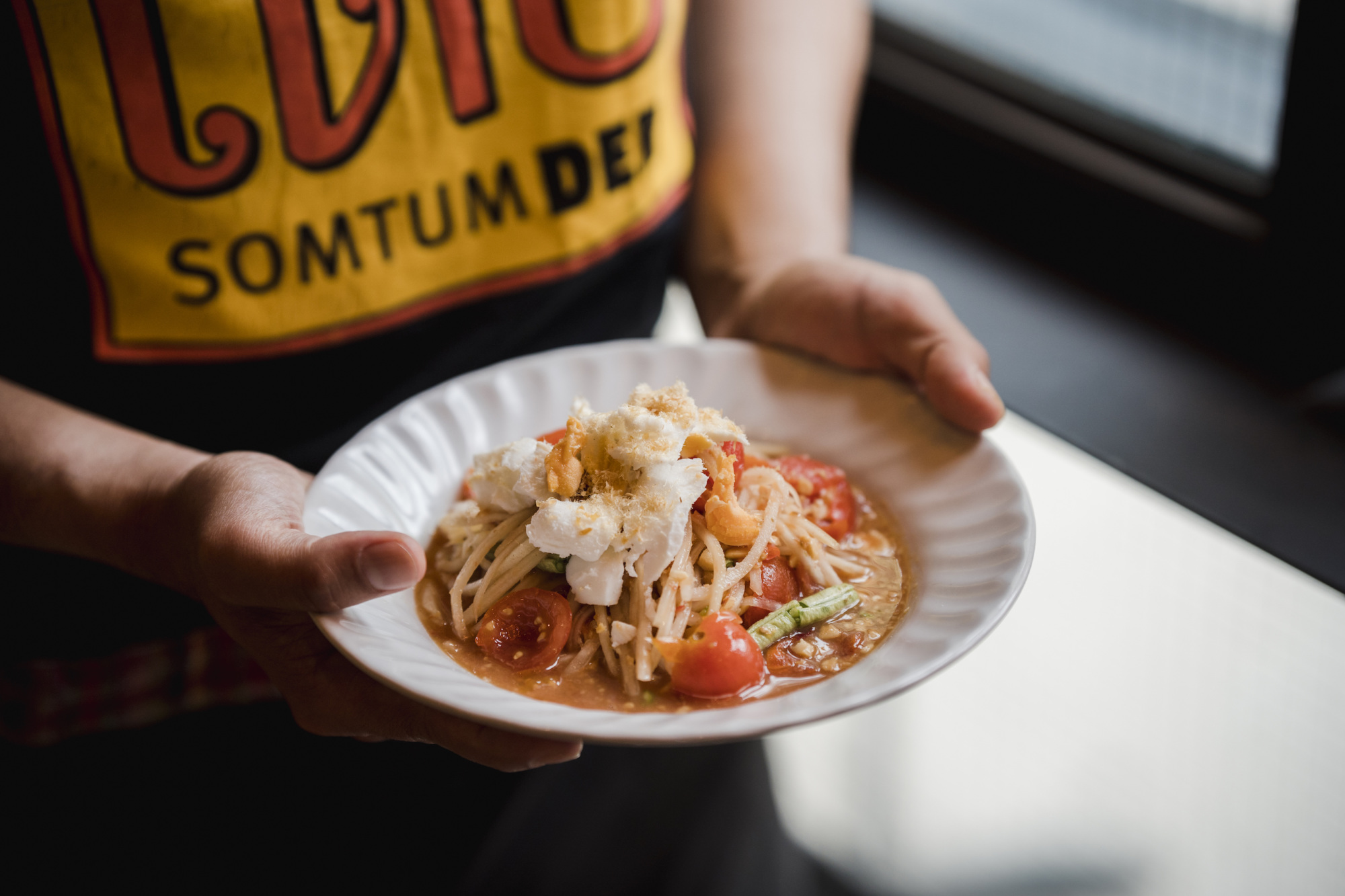
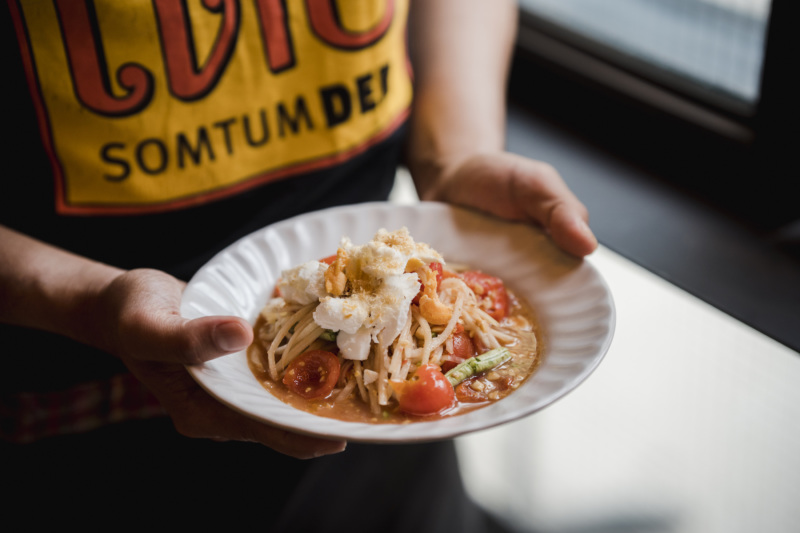
2. Tum Thai Kai Kem
“Somtum is papaya salad,” says Kitmahawong. “‘Som’ means sour and ‘tum’ means pounding. This is made with a mortar and pestle – everything that makes the salad goes in there. It’s a staple of Isan, you have to have somtum every time.
“This is the one with the salted duck egg, and on top we have dried shrimp powder. You know sometimes when you eat a spicy thing and it has that salted egg, it kind of tones it down, gives it that umami? There’s balance.
“Somtum, why is it famous? Because it has all five flavors. It’s supposed to have sweet, spicy, sour, salty, and umami. So when it’s all mixed together, it’s kind of exploding in your mouth. You can’t have one bite, you have to come back and have more.”
The Tum Thai Kai Kem is the restaurant’s most popular somtum, but more Bangkok- than Isan-style, she explains.
“If you want real, real Isan flavor, you order another version.” The Tum Poo-Plara, she says, has small hard-shell crabs, with a fermented fish sauce that Nethanunt makes in-house and regularly tweaks based on the ingredients available. “It has a strong, pungent flavor, but a lot of people – Thai people, Isan people, Laotian people love it. But this version,” the Tum Thai Kai Kem, “is for everybody.”
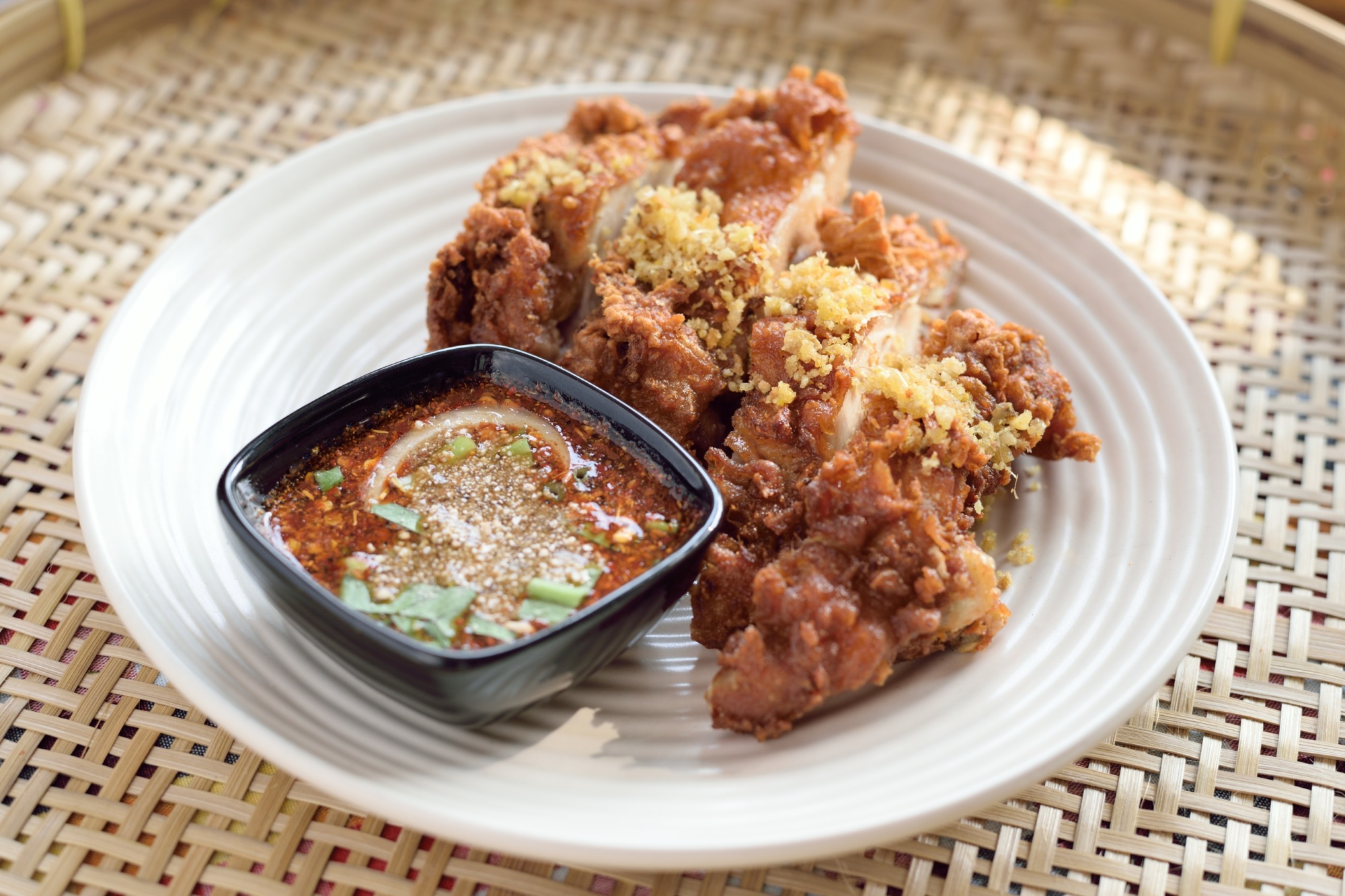
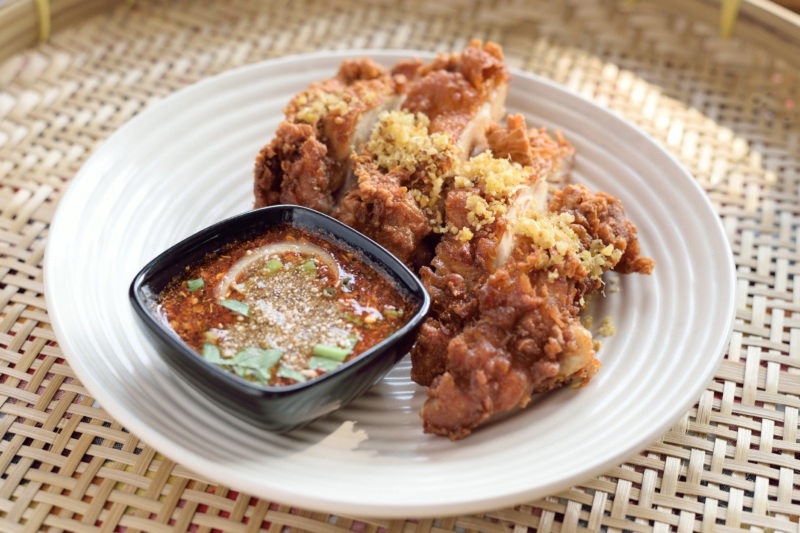
3. Sa Poak Kai Tod Der
“This is fried chicken thigh, which comes with nam jim jaew. It’s this dipping sauce that you can use with most Isan food,” Kitmahawong says. Nethanunt chimes in: “It has tamarind, fish sauce, roasted ground rice, lime, chili.”
“Chef has a very special way to make it very crispy on the outside, while inside it’s very tender,” Kitmahawong says. She turns to Nethanunt. “So how do you marinate it?”
“We marinate the chicken thigh with a sauce made from lemongrass, red curry paste, and garlic. Then we put it in a tempura batter and put some ice on it, to make the flour more crispy.”
“It’s a very special technique. Only chef knows,” Kitmahawong says with a smile. “There was a time when we first opened, I had a customer that was sitting down with his whole family. He called me over, and I’m thinking, ‘Oh no, what did I do wrong?’ And he’s like, ‘Excuse me, your fried chicken makes me think of my childhood, so much.’ So that’s how we know we did something right.”
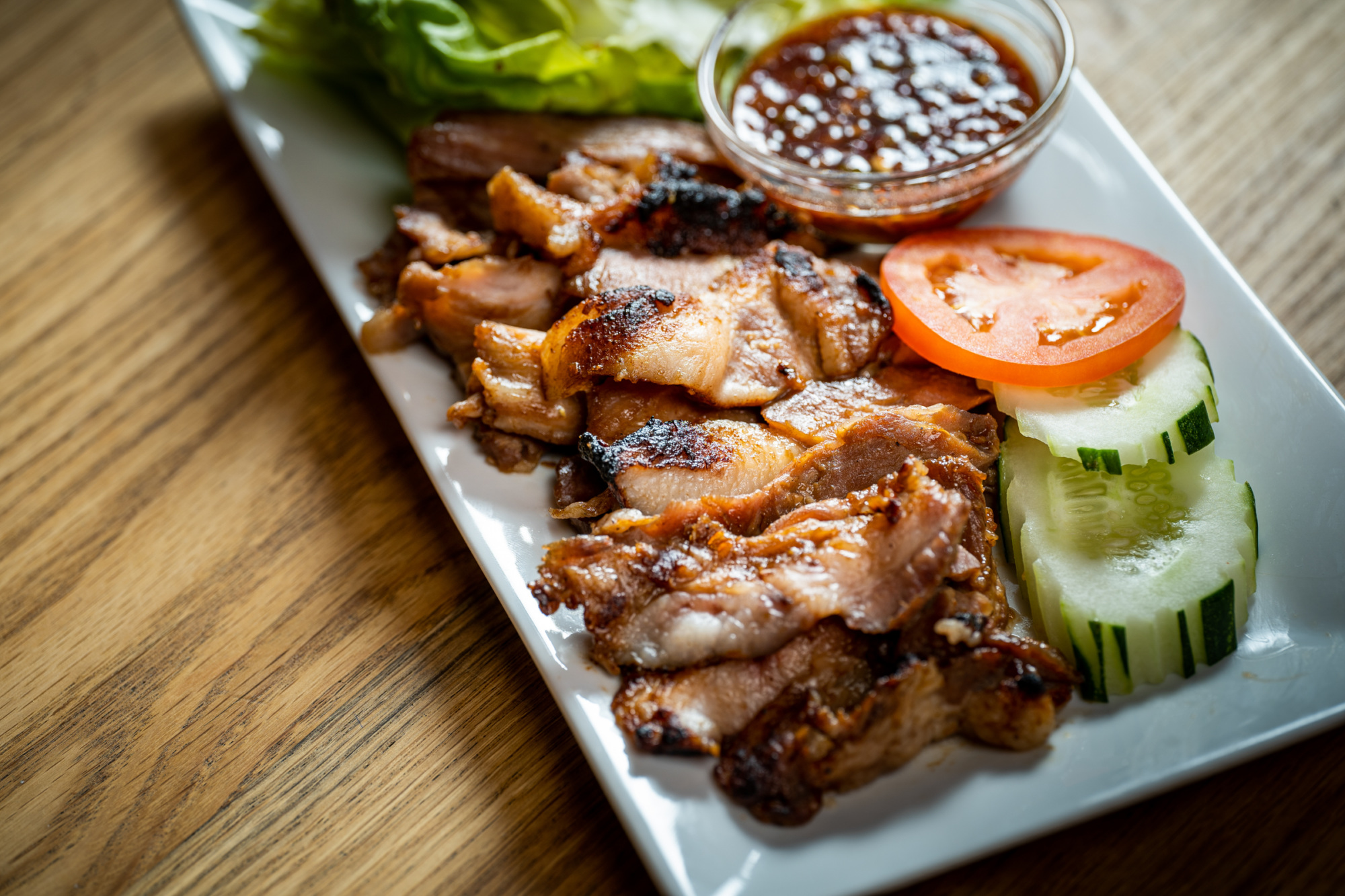
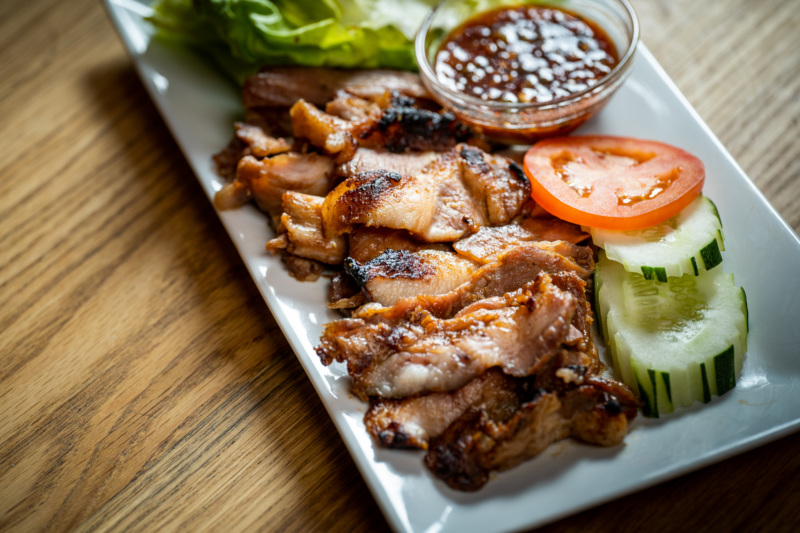
4. Kor Moo Yang
“This is the kor moo yang, which is grilled pork neck. And why is it special? It’s so plain, it’s so…nothing, when you just look at it,” Kitmahawong poses. And indeed, the plating is simple – just some grilled meat lined up next to tomato and cucumber slices with a little dish of nam jim jaew. But Nethanunt explains what makes the dish, another new item for the fall, stand out.
“It’s special because of the cut of meat you use, pork neck. It’s got a bit more fat than regular meat. And it’s just this little part [of the pig]. But it’s not pure fat, either; the meat layer just has a little bit more fat inside it. Another difference is that we use the pork bile. It’s very Isan. People there like the taste – it’s a little bitter, a little more umami.”
“The meat itself is not spicy, but it’s so yummy,” Kitmahawong muses. “When you order this, and you have something else that’s spicy, it’s like a set.”

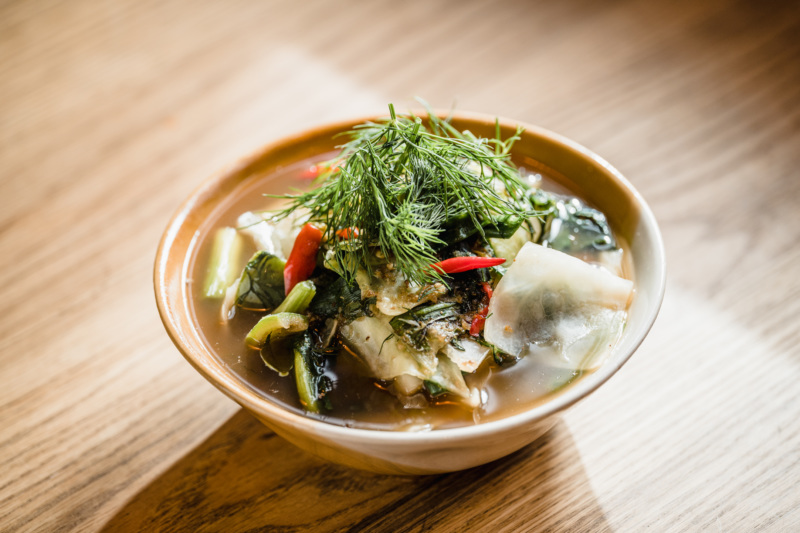
5. Gaeng Om Kai
“This is for people who love vegetables,” says Kitmahawong. “And chicken!” Gaeng Om Kai is Isan’s take on chicken soup – spicy, of course, and packed with veggies and fresh herbs, making it incredibly fragrant. As soon as it hits the table, we’re all inhaling the scent. Kitmahawong starts to list its many components.
“You know how with eggplant, you usually see the long one? This, Thai eggplant, is a round one.” She gazes into the soup. “This is cabbage … you have some scallions in there. Dill, chile. And what part of the chicken?
“For this one we do the chicken thigh also,” Nethanunt replies. “And there’s what the Isan call khao buar. It’s one of the main ingredients. We make it from galangal, lemongrass, some chili, and roasted ground rice. We mix this with the soup.” In addition to contributing flavor, he explains, the rice acts as a thickening agent. “This has the fermented fish sauce, also, but it’s not too strong because there are a lot of other smells in there.”
“The khao buar,” Kitmahawong says, “is very important.”

What to Eat and Drink in New York Right Now
Welcome back to the Resy Lineup, your biweekly dose of recommendations on what to eat, drink, and see. In this very…
Somtum Der’s East Village and Red Hook locations are both open daily for lunch and dinner starting at noon. On weekdays, both locations close briefly between 4 and 6 p.m. between services. On weekends, they remain open from noon to 10:30 or 10 p.m.
Ariana DiValentino is a writer, filmmaker, and actor based in Brooklyn. Follow her on Instagram, Twitter, and TikTok. Follow Resy, too.



